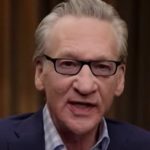Eric Baradat/Getty Images
- The Fed raised rates last week, so higher interest rates for credit cards and loans are on the way.
- While that was expected, experts aren’t sure what the Fed’s future policy actions may be.
- Rates are set to climb through 2022, but the number and size of the increases are unclear.
Everybody with an eye on the Federal Reserve expected the central bank to raise interest rates in March. Wednesday’s policy meeting proved that crowd right, but where the Fed goes from here is far less certain.
On Wednesday, the Federal Open Market Committee raised its benchmark interest rate by 0.25 percentage points, ending the near-zero rates of the pandemic era and starting a hiking cycle set to last well into 2023. The benchmark rate influences borrowing rates throughout the economy. Investors care because higher rates generally mean slower economic growth, and everyday Americans care because rate hikes mean pricier mortgages and credit-card interest.
The Wednesday hike was telegraphed by Fed Chair Jerome Powell just weeks prior when he told the House Financial Services Committee that it would “be appropriate” to back such an increase at the FOMC’s mid-March meeting. The statement was an odd one for Powell, who typically preferred vague language and flexibility in the run-up to policy decisions. But if March’s Fed action was the most obvious in years, the next few months are expected to bring a return to uncertainty.
The Fed’s Wednesday statement offered few hints at how the central bank would act in the coming months. The FOMC made only the vague declaration that additional rate hikes through the year would “be appropriate.” Even Powell’s Wednesday remarks gave little insight toward the path of monetary policy.
“Each meeting is a live meeting, and if we conclude it will be appropriate to raise interest rates more quickly, then we’ll do so,” the Fed chair said.
The size and scope of future hikes remain unclear
Federal Reserve
Some aspects of the Fed’s future policy are as clear as day. The Fed published its latest set of quarterly projections on Wednesday, which showed officials expecting slower economic growth and more persistent inflation through 2022.
Included in the projections was the closely watched “dot plot,” which details policymakers’ expectations for the Fed’s benchmark interest rate in the coming months and years. The median FOMC member expects the Fed’s benchmark rate to sit just below 2% at the end of 2022, meaning the committee may raise rates at all six of the remaining policy meetings this year. With inflation running at four-decade highs, the chances of a hikeless meeting are slim.
Yet the dot plot also shows a significant spread between where policymakers expect the federal funds rate to land by the end of the year, with one FOMC member seeing rates ending the year at 1.5%. That implies the Fed may skip a hike at two of its upcoming meetings.
Conversely, another member predicted the rate would reach 3.1% by year end. That would require multiple hikes larger than the standard 0.25 percentage points per meeting, moves that economists have largely ruled out. While a 1.9% interest rate from the Fed wouldn’t exactly match the interest rates consumers saw, the level would set a general floor for where lending rates would sit.
A larger-than-expected hike runs the risk of shocking the financial system and removing economic support too quickly.
“All expected policy changes remain contingent on an exceptionally broad range of uncertain risk factors,” said Ian Shepherdson, the chief economist at Pantheon Macroeconomics, citing the Russia-Ukraine conflict as the latest event bringing new risks to the Fed’s outlook.
The Fed’s own projections of inflation are also likely to change as new data comes in. If officials’ economic outlooks are wrong, they may have to either act more aggressively to fight inflation or slow the path of monetary tightening down and keep policy supports in place.
“The FOMC has been clear that it will take neutral to above neutral policy to get inflation down. But if policymakers underestimate where neutral is, they also are likely underestimating how far they need to move in terms of rate hikes,” Morgan Stanley economists led by Ellen Zentner said.
The Fed’s plan to off-load assets is similarly opaque
The upcoming rate hikes aren’t the only way the Fed is reining in its economic aid. The central bank is also poised to cut down on its holdings of treasuries and mortgage-backed securities after scooping up trillions of dollars’ worth of the assets over the past two years. The purchases helped keep markets functioning amid the sudden economic shutdown and pulled longer-term interest rates lower to further encourage borrowing and spending.
The Fed is now poised to start reducing its asset holdings in a bid to lift those same long-term rates. For Americans, that translates to higher rates for lengthy loans, such as those for cars and homes.
Yet the Fed’s intended timing and pace for shrinking its balance sheet are even more mysterious than its plans for rate hikes.
The FOMC’s statement offered a semblance of a forecast, with the Fed saying the committee would start reducing its asset holdings “at a coming meeting.” Powell expounded on the topic in the following press conference, confirming the reduction could start as early as the Fed’s May policy meeting, and that it would be “faster than the last time” the Fed shrank its balance sheet after similarly buying up assets in the wake of the 2008 financial crisis and Great Recession.
Still, the Fed chair repeatedly said the specifics were up in the air. “We want to avoid adding uncertainty to what’s a highly uncertain situation already,” Powell said. “I don’t want to get too much into the details because we’re literally just finalizing them.”
The Fed benefits from keeping quiet on policy projections. Offering few hints at future actions gives the Fed the upper hand in shaping the narrative and easing the financial system into its next policy move. It also allows the central bank to tweak its strategy without spooking investors who already anticipated a different move.
The Wednesday meeting shows the Fed leaning heavily on that flexibility. And with new risks emerging on a weekly basis, policymakers have to be extraordinarily careful in cooling inflation without tanking the economy.
Powered by WPeMatico






